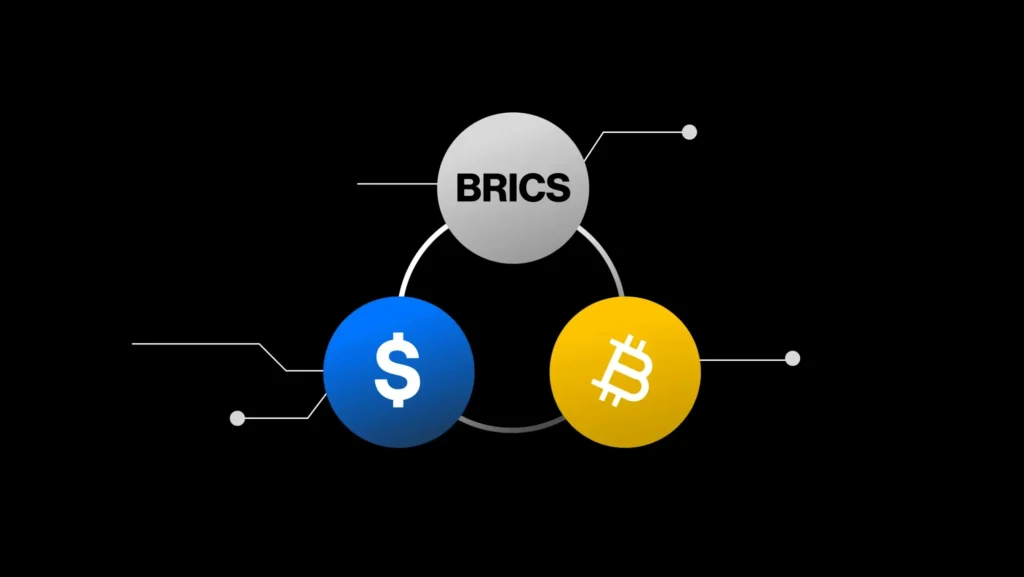The economic bloc of Brazil, Russia, India, China, and South Africa (BRICS) is reshaping global trade with discussions about an alternative financial system. The BRICS currency price has gained attention as these nations seek to reduce reliance on the US dollar and explore the introduction of a BRICS currency basket for trade settlements.
As global markets experience economic shifts, investors and businesses are increasingly monitoring BRICS currency exchange rate fluctuations to determine financial strategies. The future of these currencies will be determined by trade agreements, economic policies, and geopolitical stability within the bloc.

Content
Current Exchange Rates & Market Trends
The BRICS currency exchange rate varies based on economic performance, inflation rates, and global demand for exports. While each country operates under its monetary policies, trade partnerships within BRICS influence currency valuations over time.
- Brazilian Real (BRL): A commodity-driven currency sensitive to agricultural exports and global trade shifts.
- Russian Ruble (RUB): Influenced by energy prices and sanctions on trade policies.
- Indian Rupee (INR): A stable currency backed by a strong service sector and IT exports.
- Chinese Yuan (CNY): A highly regulated currency with government-backed stability.
- South African Rand (ZAR): A volatile currency dependent on mining, tourism, and global investor confidence.
Fluctuations in the BRICS currency price are closely watched by investors, forex traders, and global businesses looking for growth opportunities within emerging markets.
BRICS Currency Forecast and Future Growth
The BRICS currency forecast suggests increased adoption of local currency transactions in trade deals, reducing dependence on the USD. As economic cooperation strengthens, member nations aim to establish a BRICS currency value that is less vulnerable to Western financial fluctuations.
Key Market Influences on BRICS Currency Stability:
- Local Currency Settlements: BRICS nations are shifting to bilateral trade agreements in their local currencies, reducing the need for USD-based transactions.
- Digital Currency Innovation: The proposal of a BRICS digital currency could streamline trade and financial transactions among member nations.
- Commodity-Backed Stability: The BRICS currency basket may be backed by gold, energy reserves, and agricultural assets, strengthening its global appeal.
Economic analysts predict that BRICS currency stability will improve in the long run, especially as geopolitical alliances favor non-dollar-based trade settlements.
The Potential of a BRICS Digital Currency
With global finance moving toward digital transactions, the BRICS digital currency concept is emerging as a game-changer in international trade. If launched, this digital currency could facilitate faster, more secure transactions, reducing costs for cross-border trade.
Advantages of a BRICS Digital Currency:
- Lower transaction costs for businesses and governments.
- Enhanced trade security through blockchain verification.
- Reduced reliance on Western-controlled financial institutions.
- A more stable and transparent cross-border payment system.
While discussions are ongoing, many economic analysts believe that a BRICS digital currency could challenge traditional fiat currencies, particularly the USD and Euro.
BRICS Currency Converter: How to Monitor Rates
With fluctuations in the BRICS currency exchange rate, businesses and traders need accurate BRICS currency converters to track real-time conversions. These tools allow users to determine the best times to exchange or invest in BRICS currencies.
- Global forex platforms provide real-time updates on BRICS currency price fluctuations.
- Banks and financial institutions offer predictive models for BRICS currency forecast data.
- Commodity markets influence currency values, impacting exchange rate trends.
Using a reliable BRICS currency converter helps traders and investors stay ahead of currency movements and capitalize on market shifts.
Trading BRICS Currencies: Risks & Opportunities
The BRICS currency trading market presents both risks and rewards for investors. Due to the volatile nature of emerging economies, traders must assess economic indicators before buying or selling BRICS currencies.
Key Considerations in BRICS Currency Trading:
- Interest rate changes and central bank policies impact exchange rates.
- Inflation and economic stability affect investor confidence in BRICS currencies.
- Geopolitical events and trade agreements shift market demand for BRICS currencies.
While BRICS currency stability is gradually improving, forex traders must remain cautious of sudden market shifts that may impact returns on investments.
BRICS Currency vs USD: A Global Power Shift?
The BRICS currency vs USD debate is intensifying as emerging economies seek greater financial autonomy. With sanctions, trade disputes, and geopolitical tensions, the global demand for non-USD transactions is increasing.
Why BRICS Nations Want to Reduce USD Dependence:
- Sanctions on BRICS nations have pushed them to explore alternative financial systems.
- The US dollar’s influence on global inflation affects BRICS economic growth.
- A stronger BRICS currency value could stabilize trade within emerging markets.
Although the US dollar remains the dominant reserve currency, BRICS nations are steadily shifting towards self-sufficient financial structures, influencing global trade and investment patterns.
How BRICS Currency Stability Impacts Global Trade
With increasing economic cooperation, the long-term BRICS currency stability outlook is optimistic. Nations are reducing trade dependency on Western economies, strengthening financial independence within the bloc.
Key Trade Developments:
- Brazil and China now conduct major trade deals in yuan.
- Russia and India settle energy transactions without USD involvement.
- South Africa strengthens financial partnerships with BRICS investors.
These currency shifts impact global trade dynamics, making BRICS currencies more influential in world markets.
Final Thoughts: The Future of BRICS Currencies
The BRICS currency price remains a critical indicator of global economic transformations. With trade shifts, digital innovations, and geopolitical realignments, BRICS nations are reshaping the future of financial transactions.
What to Expect Moving Forward?
- Increased local currency trade deals among BRICS nations.
- Further developments in BRICS digital currency adoption.
- Potential growth in BRICS foreign exchange reserves.
For investors, businesses, and financial analysts, monitoring BRICS currency exchange rate fluctuations will be essential in adapting to future economic shifts.
FAQs
What is the current BRICS currency price and exchange rate?
The BRICS currency exchange rate varies based on economic conditions in Brazil, Russia, India, China, and South Africa. Check real-time rates with a BRICS currency converter.
Will BRICS introduce a digital currency in the future?
BRICS nations are exploring a BRICS digital currency to enhance trade and reduce USD reliance. Experts believe it could transform global finance in the coming years.

Martin Wilson has been following the crypto space since 2013. He is a passionate advocate for blockchain technology, and believes that it will have a profound impact on how people live their lives. In addition to being an avid blogger, Martin also enjoys writing about developments in the industry as well as providing useful guides to help those who are new to this exciting frontier of finance and technology.
